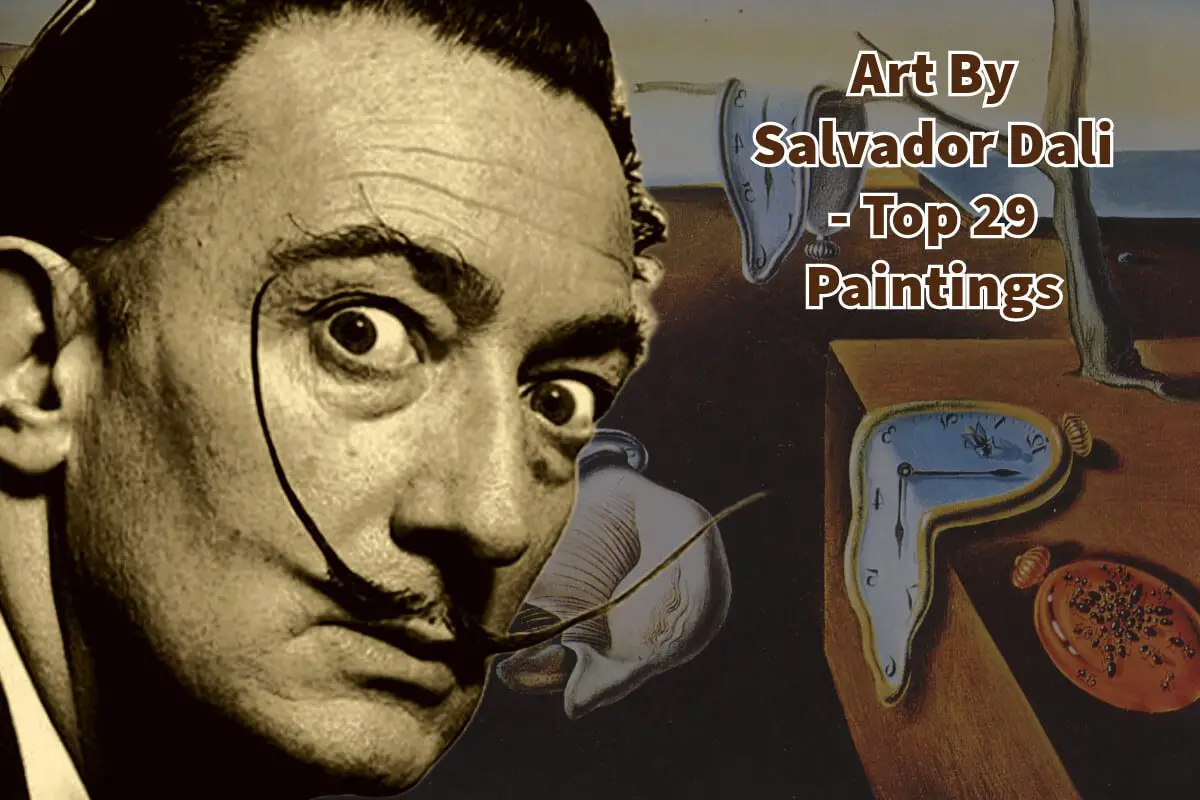Salvador Dalí’s art is a treasure trove of creativity, surrealism, and intellectual exploration. He is one of my favorite artists, as his work is so unique and exciting,
Salvador Dalí’s artworks continue to fascinate and inspire, making him a timeless figure in art history. Whether you find yourself entranced by the dreamlike landscapes, the mind-bending distortions, or the profound themes, Dalí’s art remains an endless source of wonder and contemplation. Read on as we explore one of his top artworks.
Table of Contents
- Salvador Dalí: A Journey Through His Top 29 Paintings
- The Persistence of Memory (1931)
- Dream Caused by the Flight of a Bee Around a Pomegranate a Second Before Awakening (1944)
- The Burning Giraffe (1937)
- The Great Masturbator (1929)
- Metamorphosis of Narcissus (1937)
- Swans Reflecting Elephants (1937)
- Christ of Saint John of the Cross (1951)
- The Temptation of St. Anthony (1946)
- Galatea of the Spheres (1952)
- Soft Construction with Boiled Beans (Premonition of Civil War) (1936)
- The Discovery of America by Christopher Columbus (1959)
- Geopoliticus Child Watching the Birth of the New Man (1943)
- Sleep (1937)
- The Madonna of Port Lligat (1950)
- The Elephants (1948)
- Crucifixion (Corpus Hypercubicus) (1954)
- Soft Self-Portrait with Fried Bacon (1941)
- Poetry of America (1943)
- The Sacrament of the Last Supper (1955)
- The Swallow’s Tail (1983)
- Face of Mae West Which May Be Used as an Apartment (1935)
- An Andalusian Dog (Un Chien Andalou) (film still) (1928)
- Lobster Telephone (1936)
- Lincoln in Dalivision (1976)
- The Enigma of Desire (1929)
- Archeological Reminiscence Millet’s Angelus (1935)
- The Spectre of Sex Appeal (1934)
- Living Still Life (1956)
- Frequently Asked Questions
- Related Questions
Salvador Dalí: A Journey Through His Top 29 Paintings
Salvador Dalí, one of the most prolific and controversial artists of the 20th century, left an indelible mark on the world of art. His work, characterized by surreal landscapes and mind-bending imagery, remains iconic.
Let’s delve into some of his most important works, each a masterpiece in its own right.
The Persistence of Memory (1931)
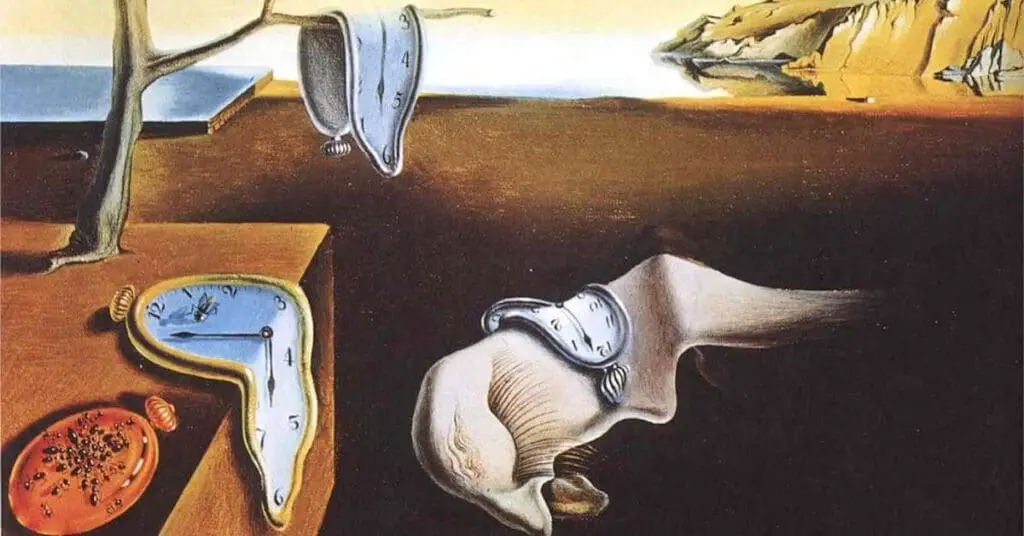
Perhaps Dalí’s most iconic painting, “The Persistence of Memory,” features the unforgettable melting clocks draped over various objects. The painting taps into the fluidity and elusive nature of time. It became an instant classic, representing surrealism and challenging the viewers’ traditional understanding of reality.
Dream Caused by the Flight of a Bee Around a Pomegranate a Second Before Awakening (1944)
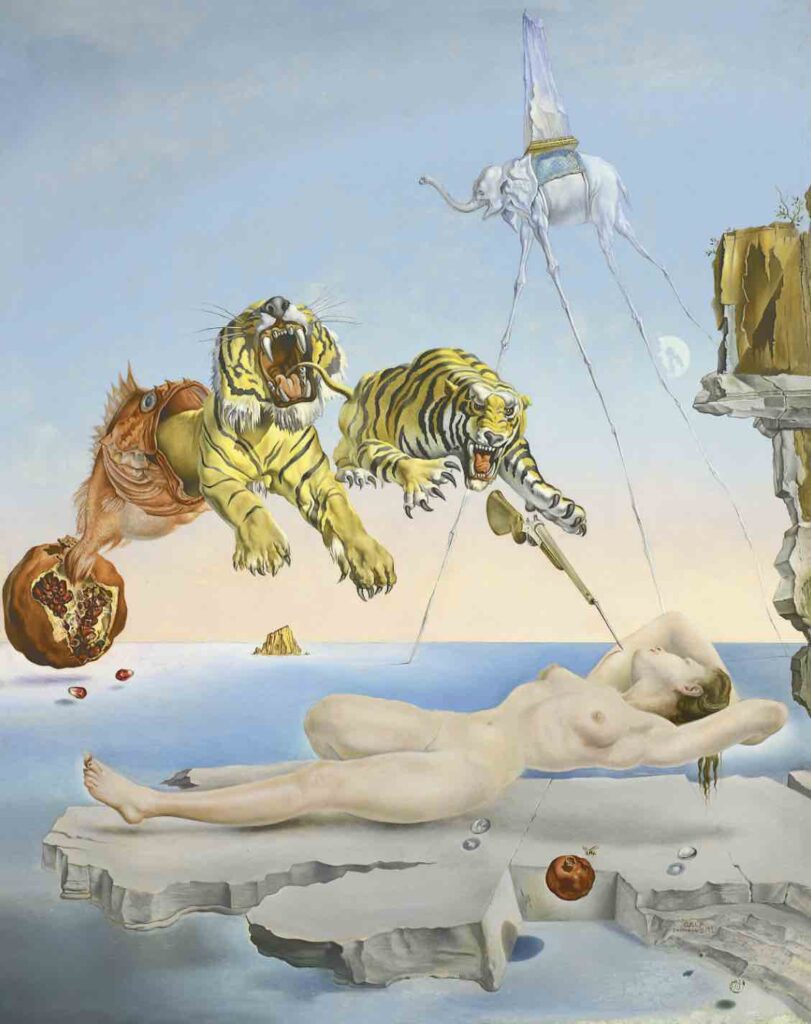
This painting is a vivid tableau of Dalí’s dream sequence, featuring a pomegranate, a bee, and exotic elements such as tigers and an elephant. The painting reflects dreams’ random and bizarre nature, offering a visual feast that invites various interpretations.
The Burning Giraffe (1937)
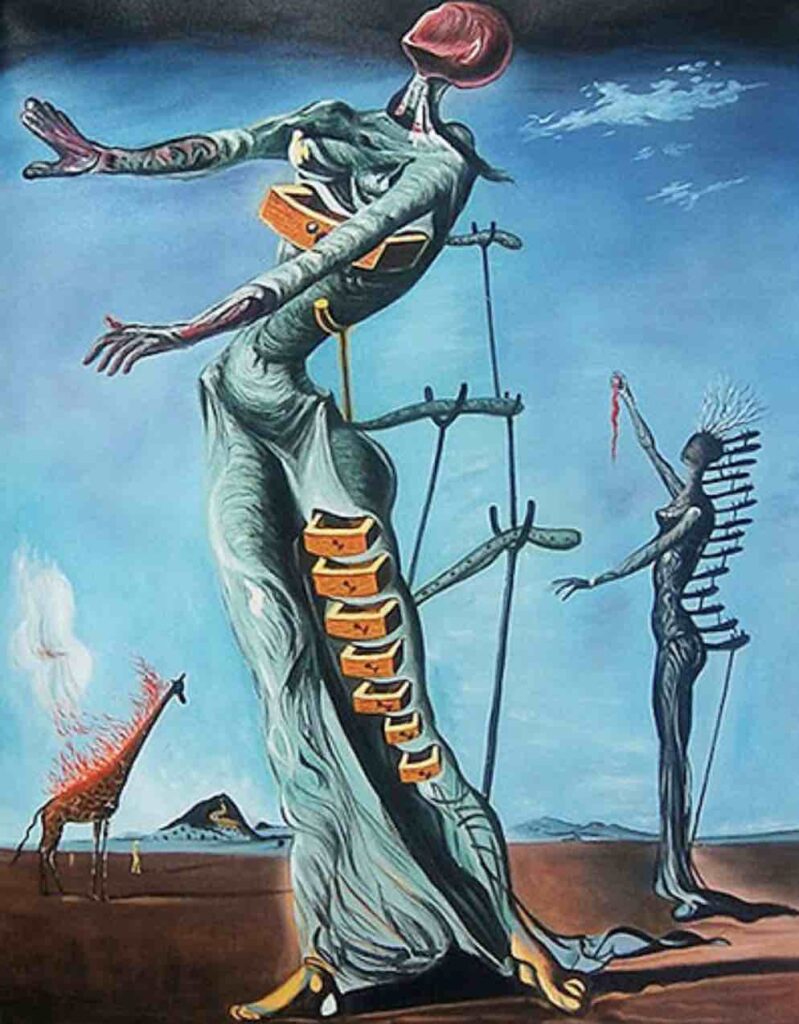
“The Burning Giraffe” is considered an artistic premonition of war, specifically the looming threat of World War II. With a giraffe on fire and disfigured drawers protruding from the human figure, the painting captures the sense of anguish and chaos.
The Great Masturbator (1929)
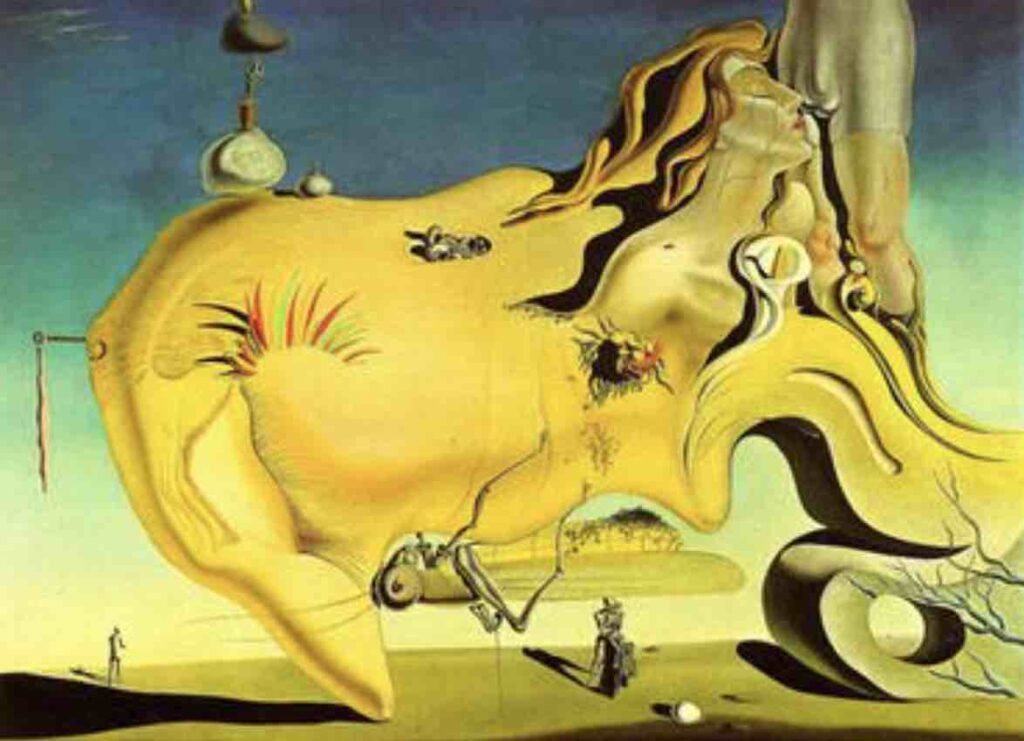
One of Dalí’s early masterpieces, this painting is a self-portrait filled with deeply personal symbols like the locust and distorted face resembling Dalí himself. The painting is an insight into Dalí’s complicated psyche and sexuality.
Metamorphosis of Narcissus (1937)
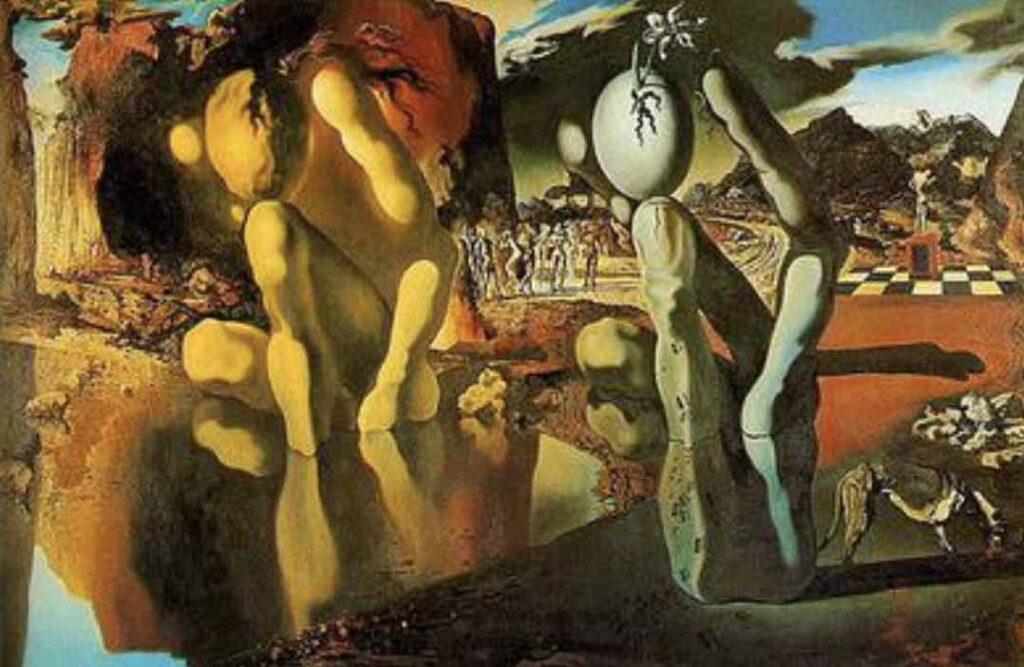
Based on the Greek myth of Narcissus, this painting employs what Dalí called “paranoia-criticism” to show the transformation of Narcissus from man to flower. It is an arresting portrayal of self-obsession and transformation.
Swans Reflecting Elephants (1937)
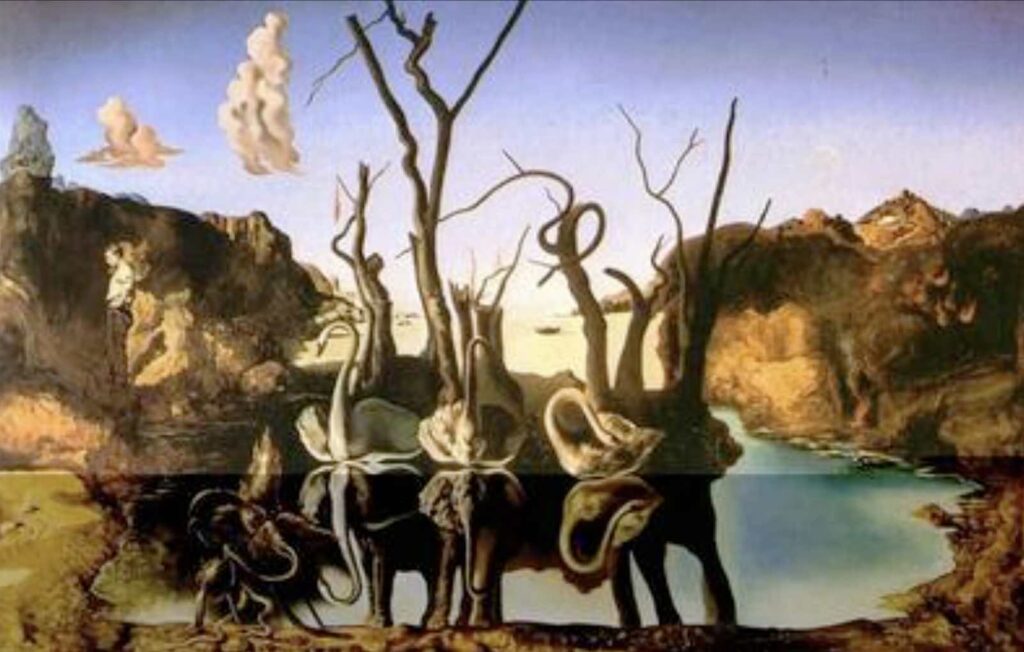
This is one of Dalí’s famous double-image paintings where the calm swans on a serene lake transform into elephants in their reflections. It beautifully captures the concept of dual realities and perception.
Christ of Saint John of the Cross (1951)
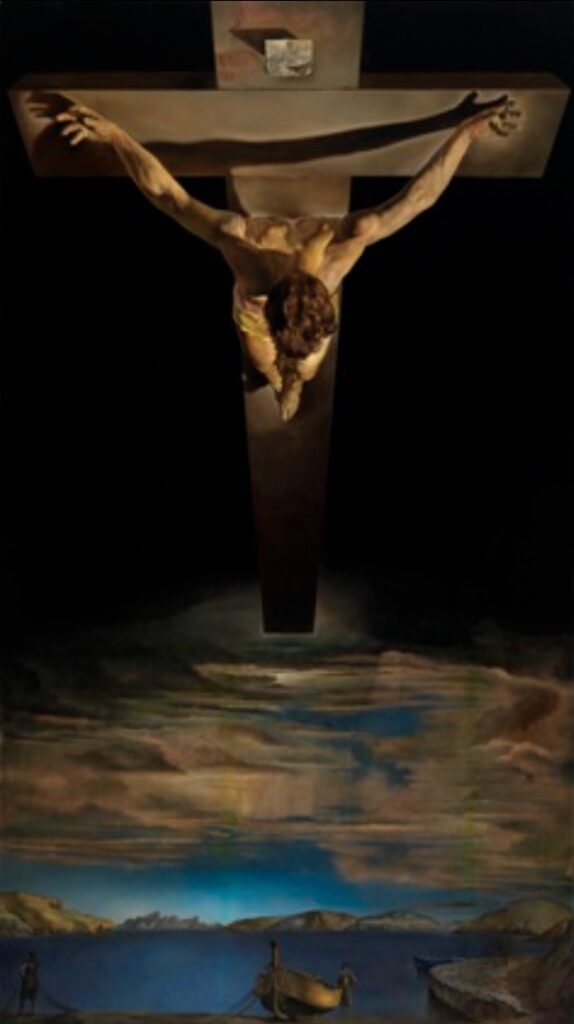
This painting reflects Dalí’s renewed interest in spirituality. Featuring an overhead crucifixion, it’s said to be inspired by a hypercube, symbolizing the union of the divine and the earthly.
The Temptation of St. Anthony (1946)

Dalí’s version of this often-depicted biblical scene is filled with haunting images of temptation, from naked figures to distorted animals. It’s a striking representation of inner struggle and moral resistance.
Galatea of the Spheres (1952)

Created as a tribute to his wife, Gala, this portrait of fragmented spherical shapes symbolizes human consciousness’s infinite complexity and interconnectedness.
Soft Construction with Boiled Beans (Premonition of Civil War) (1936)
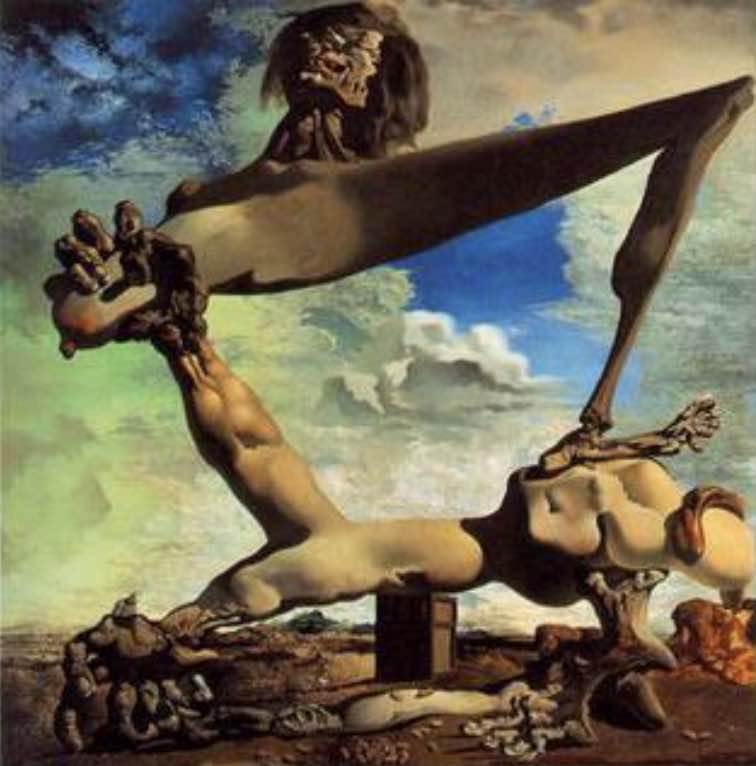
This grotesque painting predates the Spanish Civil War and encapsulates the horrors of internal conflict. With distorted limbs and anguished expressions, it serves as a powerful political statement.
The Discovery of America by Christopher Columbus (1959)

This large-scale masterpiece pays homage to Christopher Columbus’s discovery of America. Filled with religious symbols, exotic creatures, and self-portraits of Dalí himself, the painting reflects the grandiosity and complexity of discovery, colonization, and personal myth-making.
Geopoliticus Child Watching the Birth of the New Man (1943)

Created during World War II, this painting encapsulates the concept of a new era being born. The child watches the birth of a “new man,” signifying the dawn of a changed world post-war.
Sleep (1937)
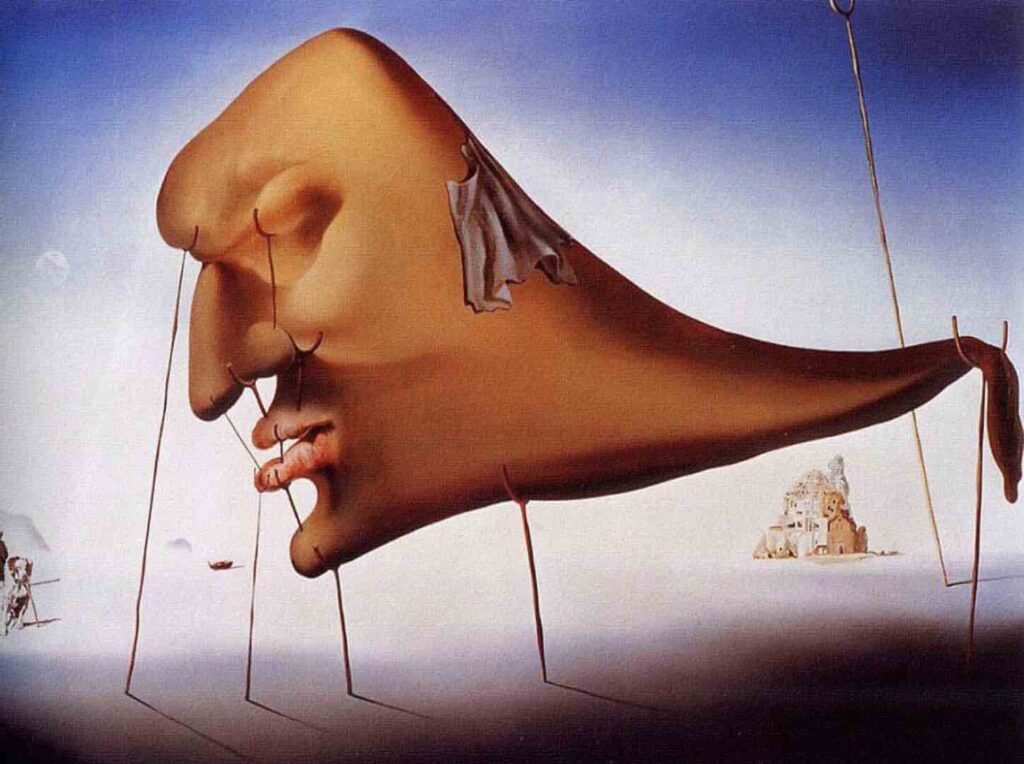
Depicting a distorted, surreal head held by crutches, “Sleep” explores the dream state. It reflects Dalí’s fascination with the subconscious and his efforts to delve into the world of dreams.
The Madonna of Port Lligat (1950)
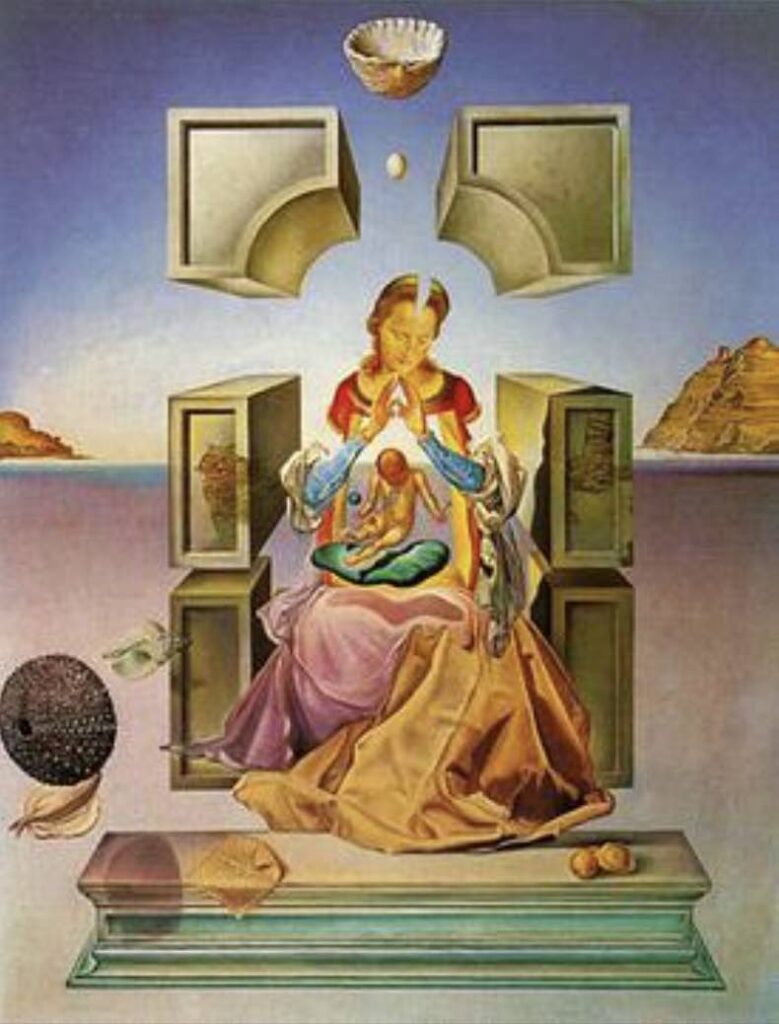
This painting is another tribute to his wife, Gala, who serves as the model for Madonna. The piece is noted for its religious symbolism and depiction of atomic particles, representing the harmony between science and spirituality.
The Elephants (1948)

Surreal and ethereal, the painting features elongated, fragile-legged elephants carrying obelisks on their backs. The painting delves into themes of weightlessness and instability, making it an unforgettable experience for the viewer.
Crucifixion (Corpus Hypercubicus) (1954)
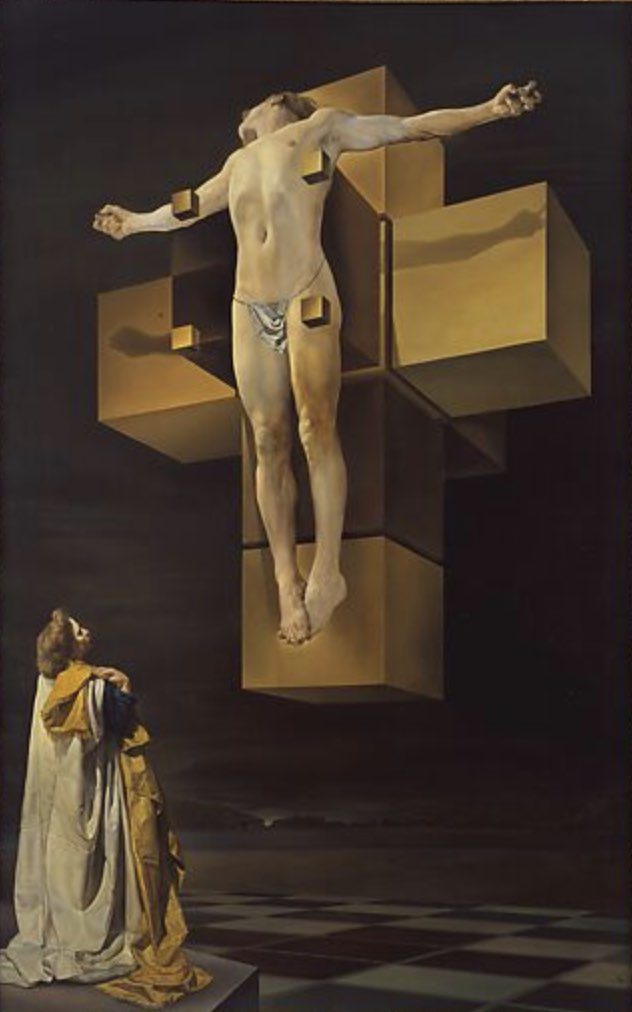
Dalí presents the crucifixion in a hypercube form, blending religious iconography with scientific inquiry. The painting is an intriguing intersection of faith and geometry, casting a fresh perspective on the crucifixion.
Soft Self-Portrait with Fried Bacon (1941)
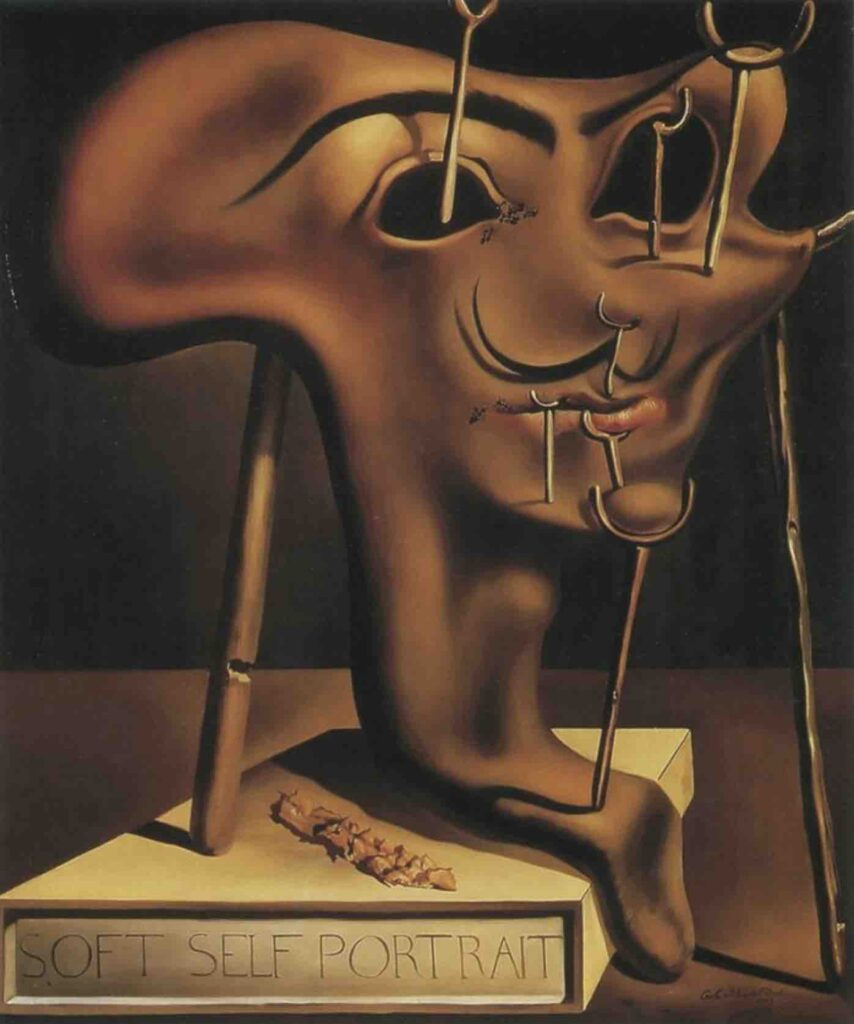
This piece combines an almost grotesque self-portrait with an oddly placed strip of grilled bacon, bringing Dalí’s surrealism into an everyday context. It’s as if the artist is challenging us to find the extraordinary within the ordinary.
Poetry of America (1943)

Dalí’s tribute to America is as complex and multifaceted as the country itself. The painting is a visual treat, filled with symbolic elements that delve into the psyche of a nation.
The Sacrament of the Last Supper (1955)

This painting represents the Biblical scene of the Last Supper, infused with Dalí’s unique perspective. It reflects the spiritual union of humans and the divine, presented in a contemporary architectural setting.
The Swallow’s Tail (1983)
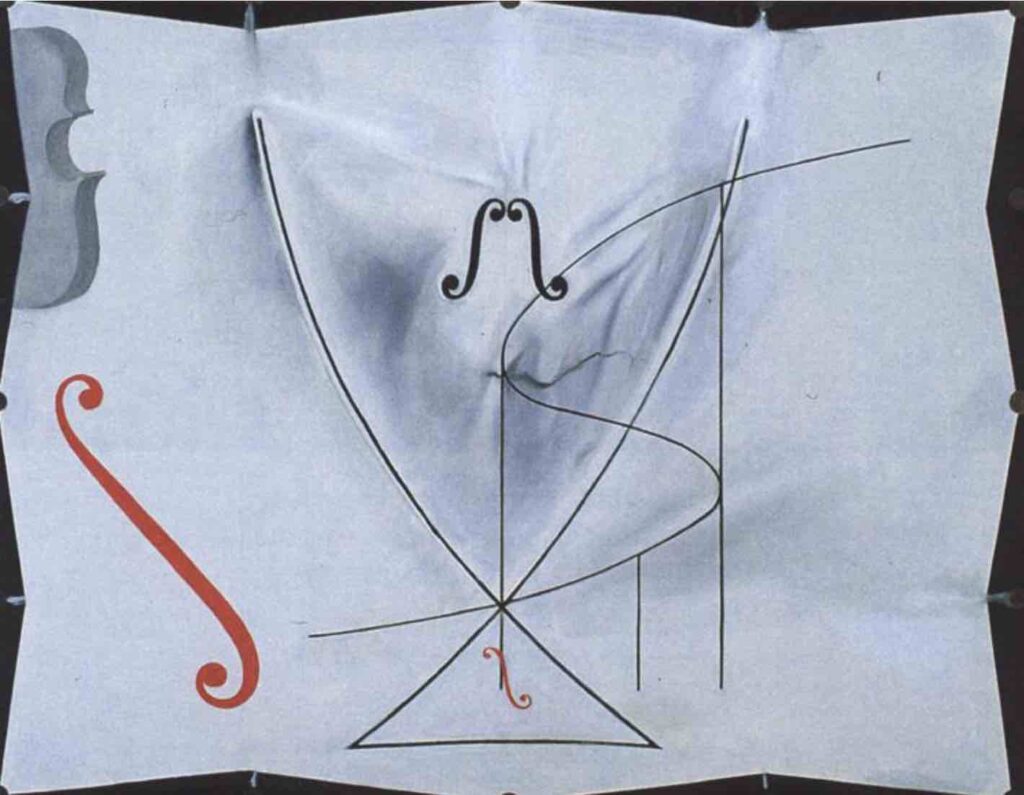
One of Dalí’s last works, “The Swallow’s Tail,” explores the mathematical theory of catastrophe. The painting represents chaos and order, embodying the constant evolution of natural phenomena.
Face of Mae West Which May Be Used as an Apartment (1935)

This painting is a multi-dimensional work that plays with perspective and function. Dalí transforms the iconic face of Mae West into a surreal apartment, merging the worlds of art and architecture. This painting exemplifies Dalí’s fascination with duality and his ability to challenge our perceptions of space and utility.
An Andalusian Dog (Un Chien Andalou) (film still) (1928)
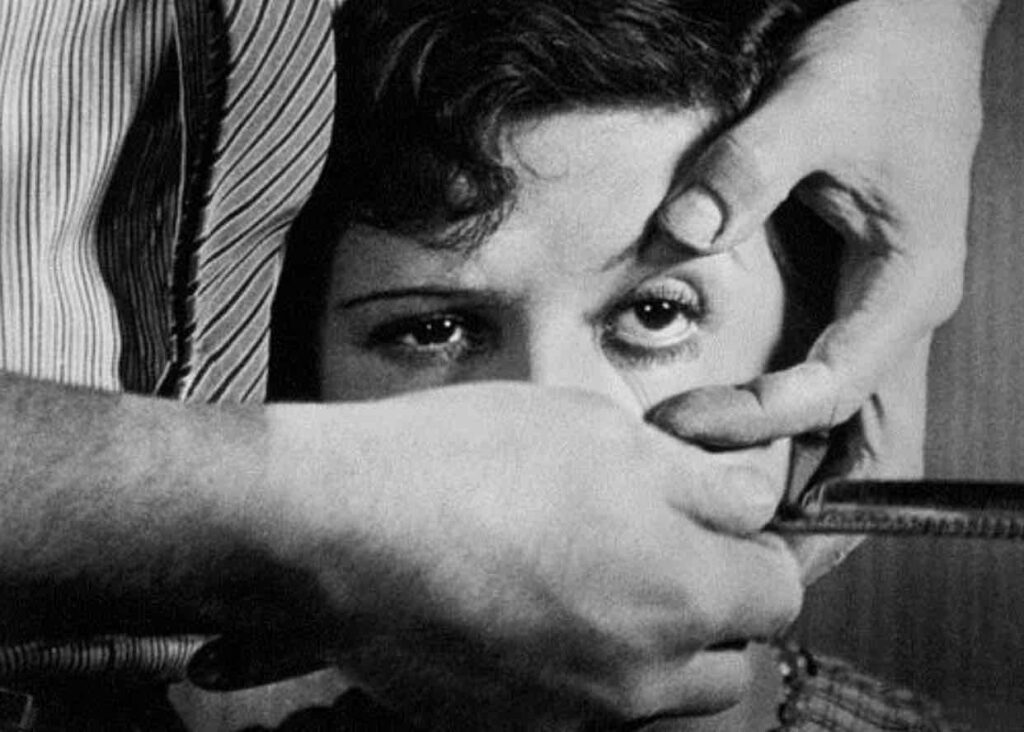
Although not a painting, this film still from the avant-garde short film “Un Chien Andalou,” made in collaboration with Luis Buñuel, deserves mention. The film, filled with dreamlike sequences and disturbing images, is a pivotal work that opened up new avenues for cinema and visual art.
Lobster Telephone (1936)

This surreal sculpture is one of Dalí’s iconic contributions to the Surrealist movement. A regular telephone with a lobster replacing the handset, this piece challenges our ideas of functionality while being infused with Dalí’s signature wit and eccentricity.
Lincoln in Dalivision (1976)
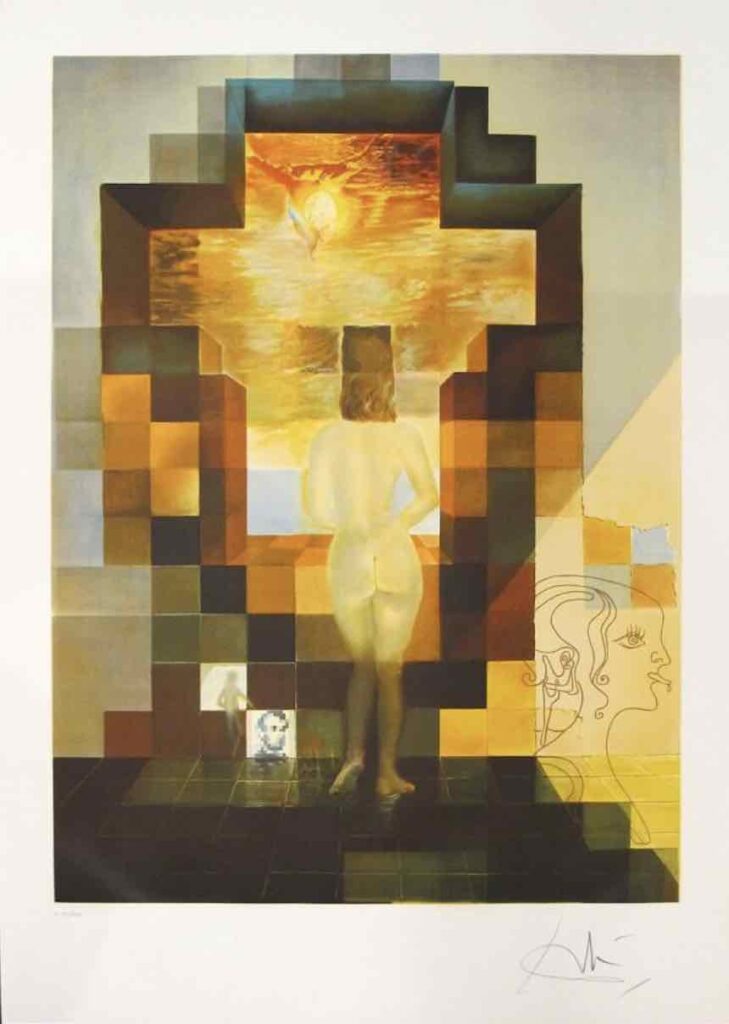
This painting captures the essence of Dalí’s later period, where he was deeply influenced by science and technology. When seen from a distance, the painting morphs into a portrait of Abraham Lincoln, showcasing Dalí’s ingenuity in optical illusions.
The Enigma of Desire (1929)
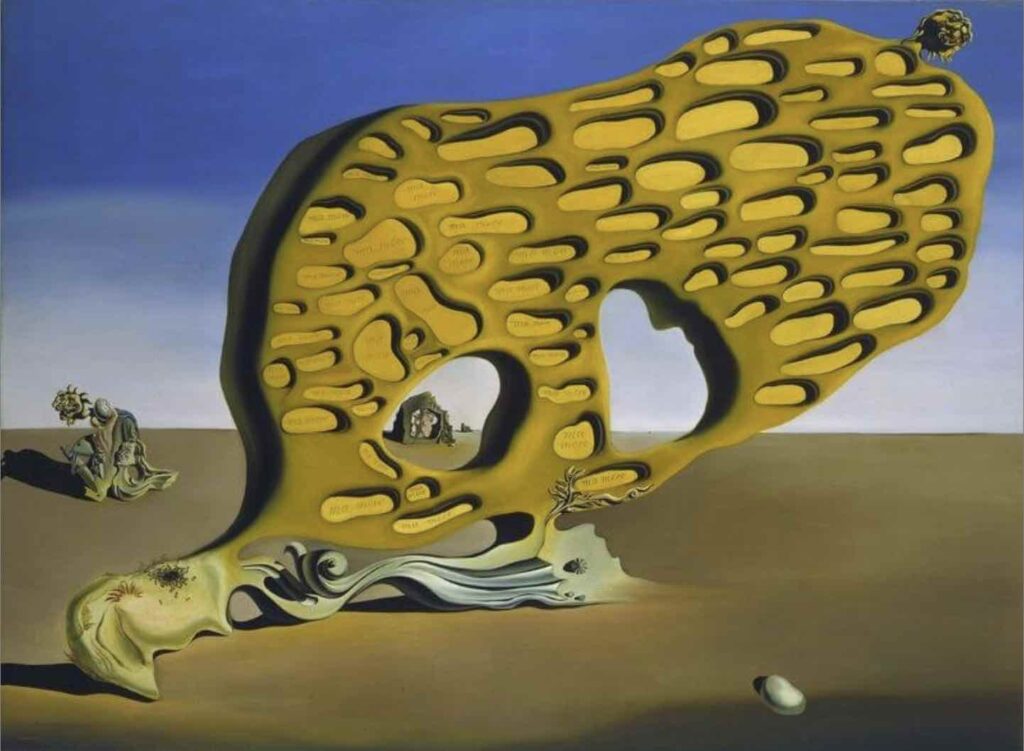
Filled with rocky landscapes and haunting imagery, this painting captures Dalí’s obsession with desire and longing. The text “ma mère” (my mother) repeated in the painting further underlines Dalí’s complex emotional landscapes.
Archeological Reminiscence Millet’s Angelus (1935)

This painting pays homage to Jean-François Millet’s “The Angelus,” but Dalí reimagines it as ancient ruins. This piece beautifully portrays the longevity and persistence of art across ages, almost like an archeological find from the future.
The Spectre of Sex Appeal (1934)
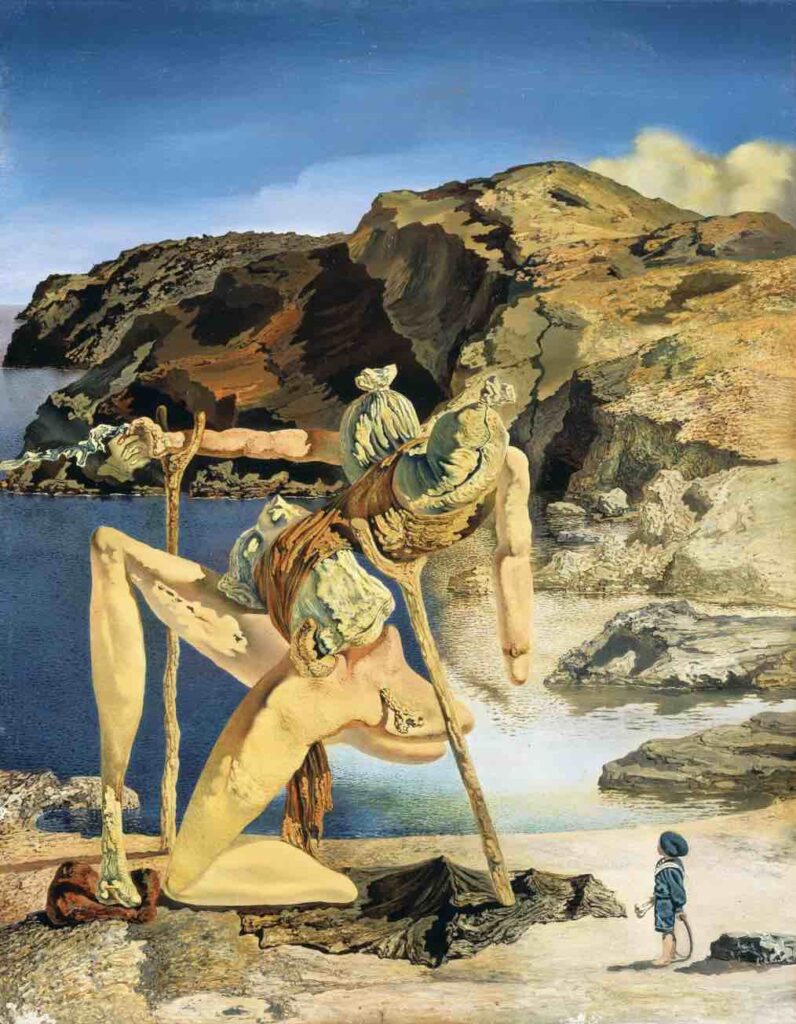
Though the exact date of this painting is not confirmed, its thematic brilliance is undoubted. Dalí explores the illusions and disillusions of sexual attraction, using a fragmented female form as the centerpiece.
Living Still Life (1956)
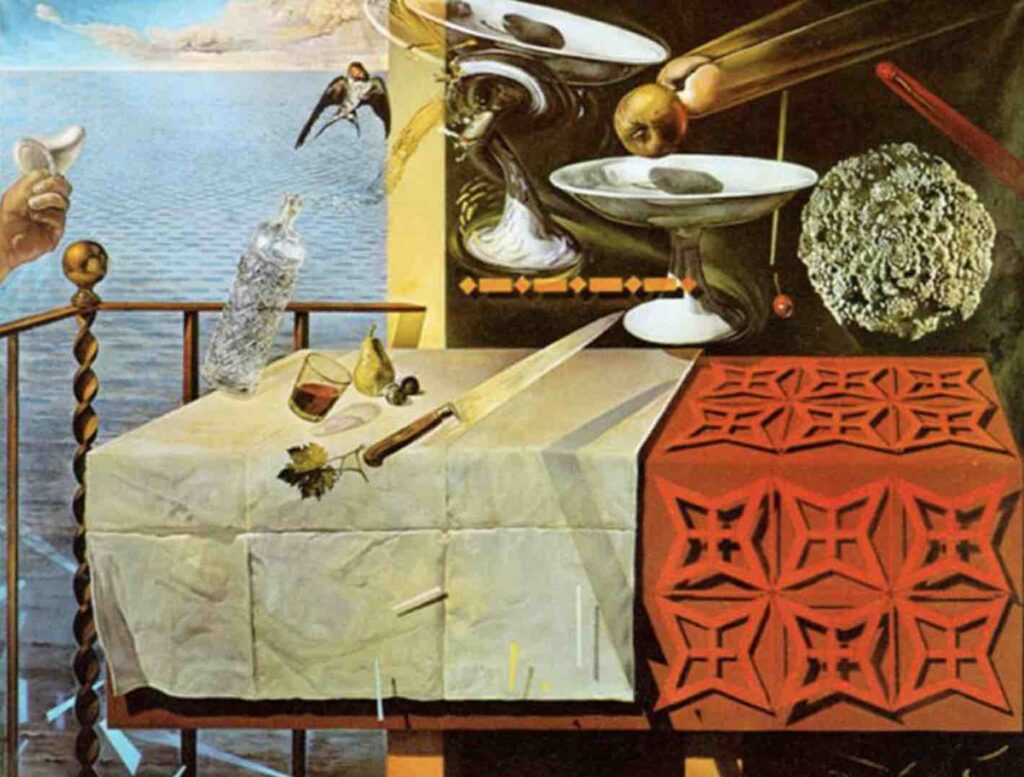
In this painting, Dalí brings inanimate objects to life, distorting the concept of a ‘still life’ by adding dynamic movement. It’s a blend of the traditional and the surreal, as only Dalí could achieve.
Salvador Dalí’s extensive repertoire offers more than just paintings; it presents a vivid landscape of dreams, controversies, and endless imagination. From mind-bending surrealism to penetrating explorations of the self, Dalí remains an enigmatic figure who has forever shaped art history.
Whether you are just starting to explore his work or revisiting it for the umpteenth time, Dalí’s art never ceases to intrigue, astonish, and inspire.
Anita Louise Art is dedicated to art education, great artists, and inspiring others to find and create their art. We love art that uplifts and inspires. #ArtToMakeYouSmile! #ArtToMakeYouHappy!
If you are interested to see any of my art, you can find out more by clicking here. If you are interested in what inspires me and my paintings, you can discover more by clicking here.
We have a free newsletter and would love you to be part of our community; you can subscribe to the newsletter by clicking here. If you have any questions, I would be happy to talk to you anytime. You can reach me, Anita, by clicking here.
Subscribe to our Anita Louise Art YouTube Channel filled with great videos and information by clicking here.
Frequently Asked Questions
What makes Salvador Dalí’s art unique among other artists?
Dalí’s art is characterized by surrealism, dreamlike landscapes, and mind-bending distortions. His unique approach to depicting reality and exploring the subconscious sets him apart from other artists.
What are some of Salvador Dalí’s most famous paintings from the top 29 list?
Some of his renowned paintings include “The Persistence of Memory,” “The Elephants,” “The Sacrament of the Last Supper,” and “Galatea of the Spheres.”
How did Salvador Dalí contribute to the surrealist movement through his art?
Dalí played a crucial role in the surrealist movement by exploring the depths of the subconscious mind through his art. His fantastical and symbolic paintings often defied traditional artistic norms.
What themes does Salvador Dalí frequently explore in his paintings?
Dalí’s paintings often explore themes such as time, identity, dreams, and the relationship between the conscious and subconscious mind.
How does Salvador Dalí’s use of symbolism enhance the meaning of his paintings?
Dalí employed intricate symbolism to convey deeper meanings in his works, allowing viewers to interpret his art on multiple levels and sparking intellectual contemplation.
What techniques did Salvador Dalí use to create his distinctive style in painting?
Dalí employed meticulous attention to detail, precise brushwork, and a combination of realistic and fantastical elements to create his unique and instantly recognizable style.
Why is “The Persistence of Memory” considered one of Salvador Dalí’s masterpieces?
“The Persistence of Memory” is celebrated for its melting clocks, symbolizing the fluidity and subjectivity of time. It’s an iconic representation of Dalí’s ability to capture the elusive nature of reality.
How did Salvador Dalí’s personal life influence his art?
Dalí’s personal life, marked by eccentricity and a fascination with the unusual, significantly influenced his art. His dreams, fears, and obsessions often found expression in his paintings.
What role did Salvador Dalí play in the broader context of 20th-century art history?
Dalí was a leading figure in the surrealist movement, contributing innovative ideas to 20th-century art. His influence extended beyond painting, encompassing sculpture, film, and even fashion.
How can viewers engage with and appreciate the complexity of Salvador Dalí’s paintings?
To appreciate Dalí’s art fully, viewers can delve into the symbolism, study the details, and consider the emotional and intellectual impact. Exploring the context of his works enhances the overall understanding and enjoyment.
Related Questions
What Are The Characteristics Of Mannerism Art?
Mannerism was an art movement filled with elongated bodies, tiny heads, and human figures in twisted forms. Perspective and proportion were unnecessary, but colors, contrasts, virtuosity, and agitated compositions were essential.
By clicking here, you can learn more by reading What Are The Characteristics Of Mannerism Art?
11 Interesting Facts About Traditional Hawaiian Art
Hawaiian art is divided into three main periods: pre-European art, Nonnative Hawaiian Art, and Hawaiian Art With Western Influences. After Captain Cook arrived in Hawaii in 1773, traditional Hawaiian art changed as Western culture influenced Hawaiian art. The Volcano School of Art was developed in Hawaii in the late 1800s when the artist’s work became impacted by the live volcanic eruptions in Hawaii.
By clicking here, you can learn more by reading 11 Interesting Facts About Traditional Hawaiian Art.
5 Ways Spending Time In Nature Helps Artistic Inspiration
Spending time in nature can help your artistic inspiration in 5 different ways 1) getting us out of the studio to see something new, 2) doing as the en Plein air painters and seeing art in a new light, 3) boosting our creativity, 4) helping us unblock an artistic block, and 5) clearing our minds so we can be more creative.
By clicking here, you can learn more by reading 5 Ways Spending Time In Nature Helps Artistic Inspiration.

